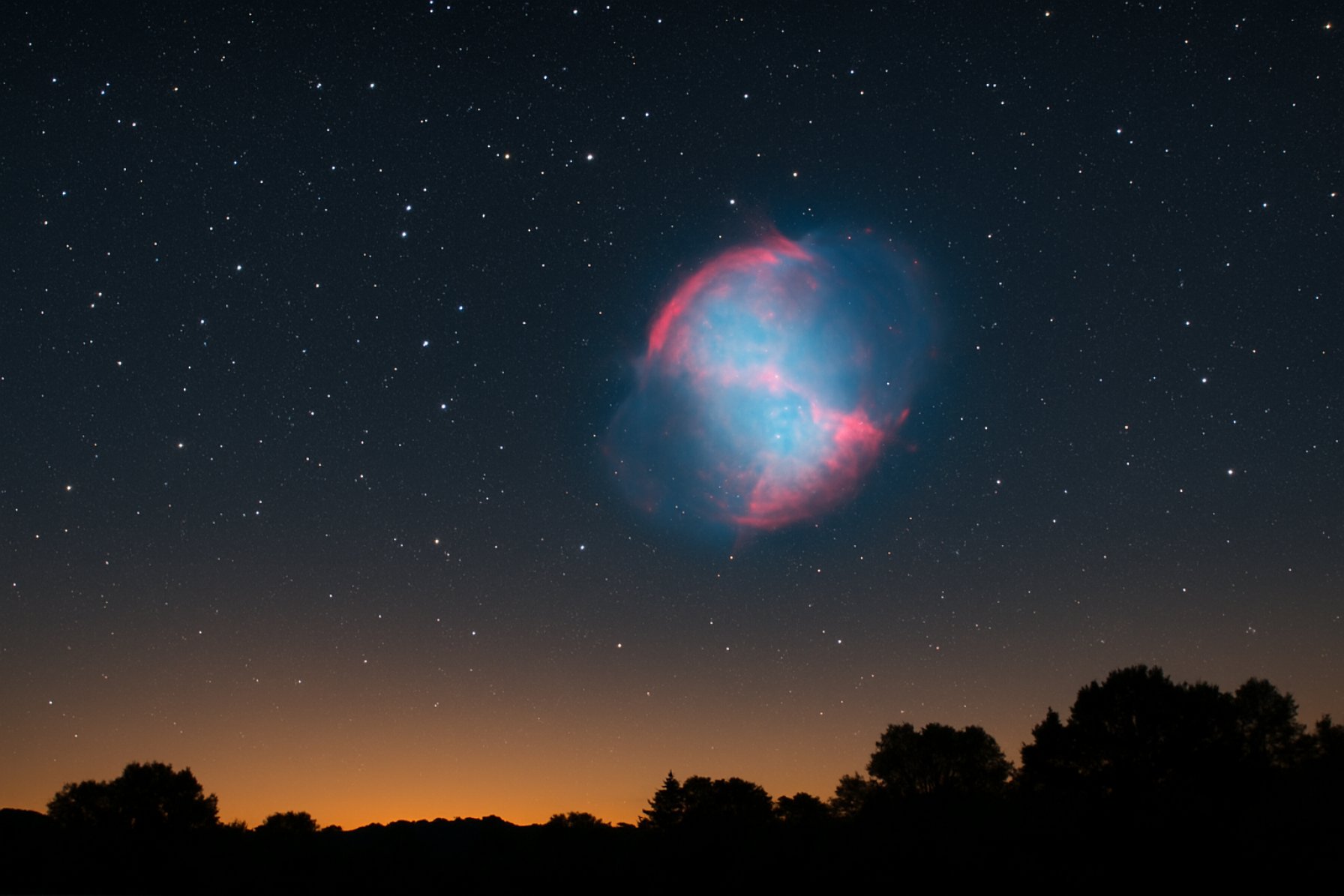Unlock a Rare Celestial Spectacle: How to Find the Dumbbell Nebula in 2025’s Early Morning Skies
Catch the Dumbbell Nebula—M27—at its best just after the Moon sets, using these expert tips for a perfect pre-dawn stargazing session.
• M27 shines at magnitude 7.4—visible in binoculars or a small telescope
• Window for best viewing: 1 hour after Moonset, before dawn
• Dimensions: 8 arcminutes x 6 arcminutes across the sky
• First discovered planetary nebula in history
Are you ready for a cosmic side quest before sunrise? The Dumbbell Nebula, or M27, is putting on a spectacular show in the predawn sky this week. Don’t miss this fleeting opportunity to marvel at one of the most iconic planetary nebulae—all before breakfast.
This historic nebula, located in the constellation Vulpecula, glows with enough brilliance that even backyard astronomers can spot it with basic equipment. Just after the Moon dips below the horizon around 3:00 A.M., a goldmine of darkness unfolds—giving you a shot at crystal-clear views before sunlight floods the sky.
Q: Why Is This the Best Time to See the Dumbbell Nebula?
This short window—barely an hour—after the Moon sets but before twilight is your best bet for catching the nebula’s ghostly glow. The waxing gibbous Moon (at 88% full) quickly gives way to the deepest darkness of the night, offering prime viewing conditions for faint deep-sky objects like M27.
Q: What Is the Dumbbell Nebula and Why Is It Famous?
M27 isn’t just any nebula—it was the first planetary nebula ever discovered and remains a rite of passage for skywatchers. Its bi-lobed, bow-tie shape is unmistakable, glowing greenish-blue through binoculars or a wide-field telescope. Deep photos reveal an intricate spherical shell and a faint halo pulsating beyond its brighter core—a hidden masterpiece of the cosmos.
For more on other nebulae, try NASA’s official site.
How to Spot M27: Step-by-Step Guide for Beginners and Pros
- Start at 3:30 A.M. local time—when Aquila the Eagle soars high, led by dazzling Altair.
- From Altair, look about 11° north to locate Gamma Sagittae, a bright marker star.
- From Gamma Sagittae, move 3.2° further north to zero in on M27.
- Use binoculars or a small scope to scan the region; the nebula will appear as a pale blue-green puff.
- If you own a 10-inch or larger telescope, swap in a higher-power eyepiece for a shot at M27’s tiny, 13th-magnitude central white dwarf—a rare reward for dedicated observers.
For more stargazing tips, check out Sky & Telescope.
Q: What Else Should I Watch for in the Sky?
Dawn brings more than M27. Expect brilliant planets lining the horizon and—on especially clear mornings—faint meteor streaks. Always note sunrise and sunset times: for 40°N, 90°W, the Sun rises at 5:32 A.M. and sets at 8:27 P.M., while Moonrise is at 5:24 P.M. and Moonset at 3:00 A.M.
For a comprehensive look ahead at other celestial events, visit Space.com.
How Can I Get the Best View? Expert Tips:
- Use a low-power telescope eyepiece to locate the nebula.
- Switch to a higher power for close-up detail once you’ve spotted M27.
- Find a dark-sky location, shielded from street lights.
- Let your eyes adjust to darkness for 20-30 minutes before observing.
- Refer to apps or charts for accurate star-hopping.
Don’t let this cosmic window slip by—alarm clocks and coffee at the ready, adventure awaits above!
Checklist for Tonight:
- Set your alarm for 3:00 A.M.
- Prepare binoculars or your telescope in advance
- Locate Altair and Gamma Sagittae as waypoints
- Hop to M27 and enjoy the celestial show
- Take a photo and share your find with fellow astro-enthusiasts









